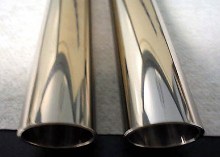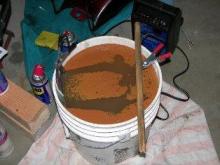Categories: Featured Articles » Sharing experience
Number of views: 29389
Comments on the article: 0
How to make a nickel coating on a metal surface
 Making a shiny silver or gold plating is not very difficult technically, other difficulties may arise here: it is not easy to get gold compounds. And silver compounds used in electroplating are poisonous: they are mainly cyanide compounds.
Making a shiny silver or gold plating is not very difficult technically, other difficulties may arise here: it is not easy to get gold compounds. And silver compounds used in electroplating are poisonous: they are mainly cyanide compounds.
Therefore, it is better to make a nickel coating in an electrochemical way. A brilliant layer of metal will immediately appear on the surface (it sparkles no worse than gold!), Requiring insignificant machining. The electrolyte should be of the following composition: nickel sulfate 280-300 g / l, nickel chloride 35-45 g / l, boric acid 30-40 g / l.
The temperature of the solution is 50-60 degrees C, pH 3.5-4.5 (measured with indicator paper).  The amount of electrolyte depends on the size of the item and the electrolytic bath - the vessel in which the galvanic process is carried out.
The amount of electrolyte depends on the size of the item and the electrolytic bath - the vessel in which the galvanic process is carried out.
In order to make the metal layer brilliant, cobalt sulfate, formalin and hydrogen peroxide should be added to the electrolyte; the amount of these substances is determined empirically.
Anode is a nickel plate (it is better to make several anodes). The total surface area of the anodes should be about the same as that of the nickel-plated item.
The prepared electrolyte should be carefully filtered and “worked through”, that is, put an anode and a steel cathode in it and pass a current for some time (10-15 minutes) (voltage 0.5-1 V, current density 5-10 a / dm2).
The surface of the object, which will be covered with a layer of metal, is first thoroughly degreased in a hot solution of alkali and soda, then washed with distilled water and etched in a 4-5% hydrochloric acid solution; washed again and immersed in electrolyte. An electric current is passed through the system (current density 2-5 a / dm2, voltage at the terminals 2.5-3 V).
Read also: Useful electronic homemade products
Michael Weiss
See also at e.imadeself.com
:
